Made with Japan 2018 Lithuania+Amami Oshima
Visit Lithuania
The official name of Lithuania is The Republic of Lithuania (Lietuvos Respublika), and its capital is Vilnius. The airport terminal buildings are generally modish, but in Vilnius International Airport, you can feel like you are staying in a cozy historic city hall in the countryside. The Old Town of Vilnius is the crossroads of Northern, Eastern and Western Europe, and the town has been classified as a World Heritage Site by UNESCO. Just strolling and browsing things is a lot of fun.
Since joining the EU, the infrastructures in Lithuania have been greatly improved. Today a lot of airplanes from other European countries are available; from the UK, Italy, Germany,
Norway, the Netherlands, Belgium, France and so on. The highway busses are also convenient, and you can utilize them readily.
*If you use highway busses, we strongly recommend that you always have your passport with you. They might ask for identification at some checkpoints.
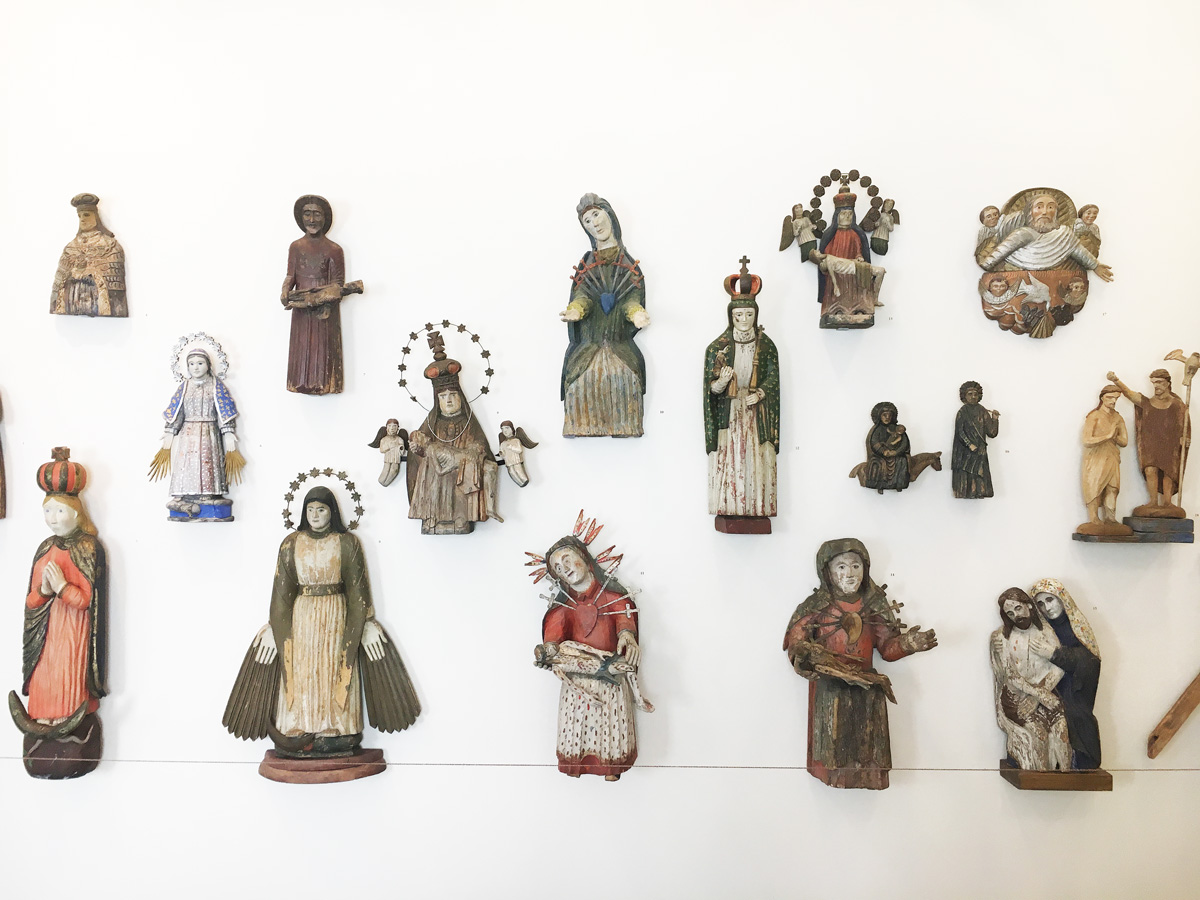
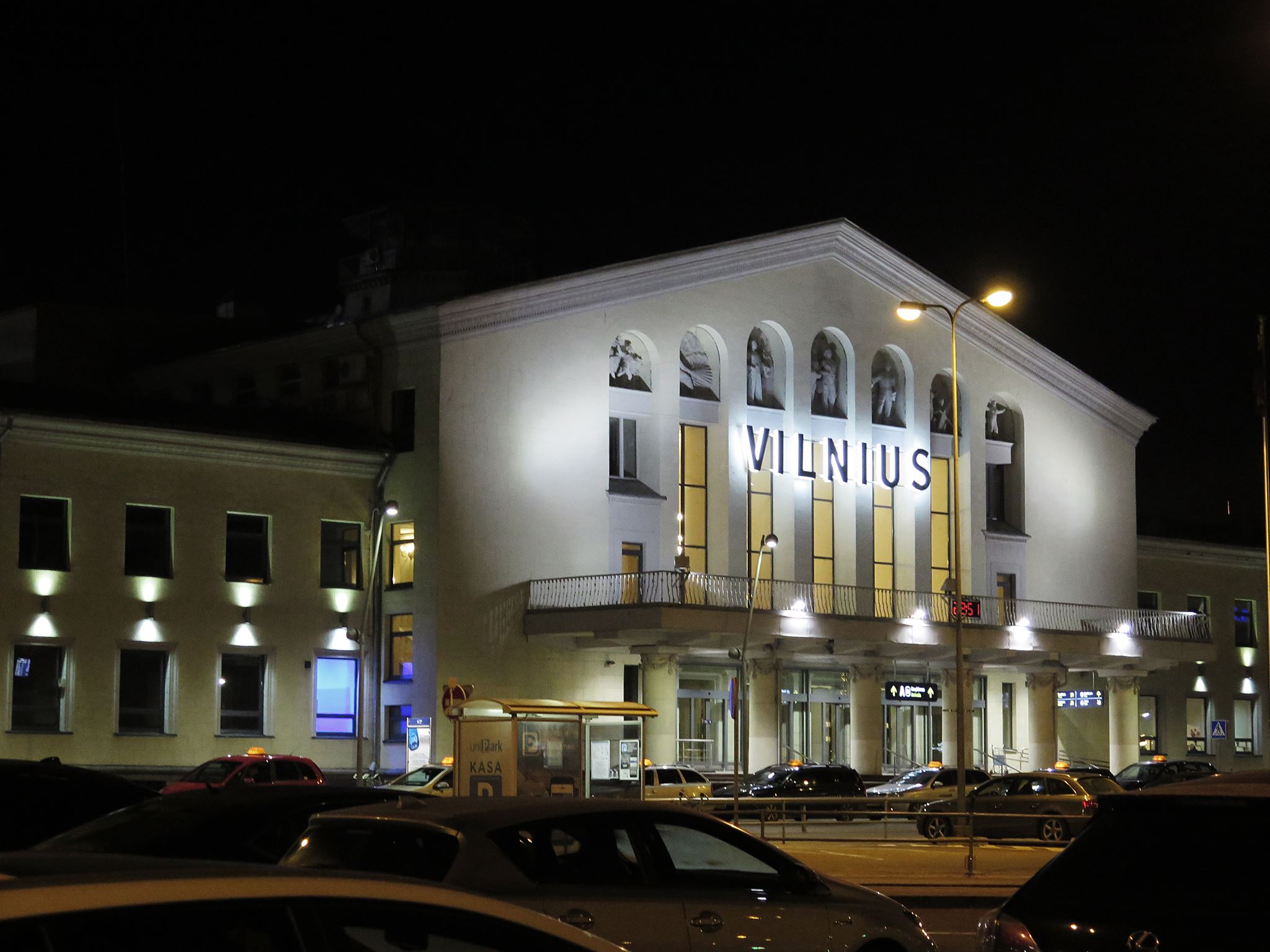


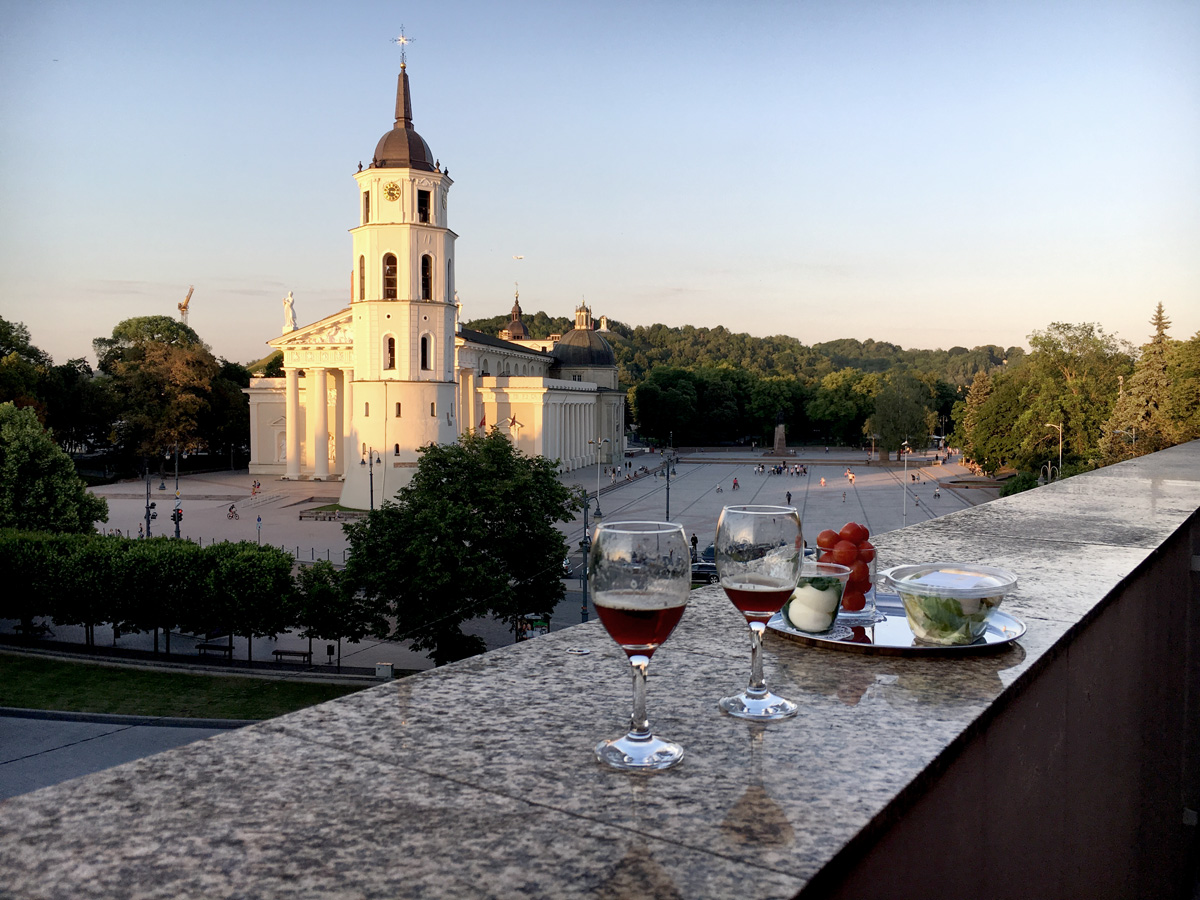
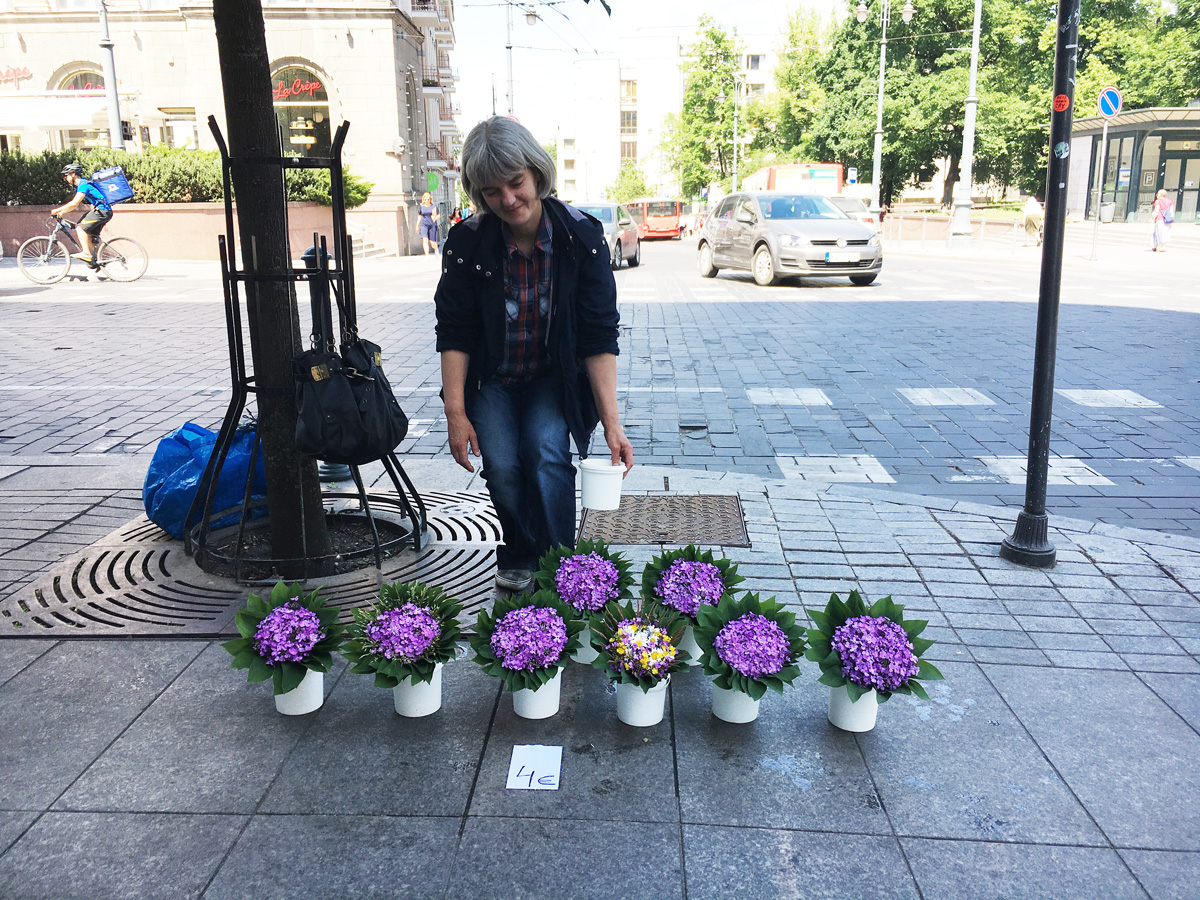
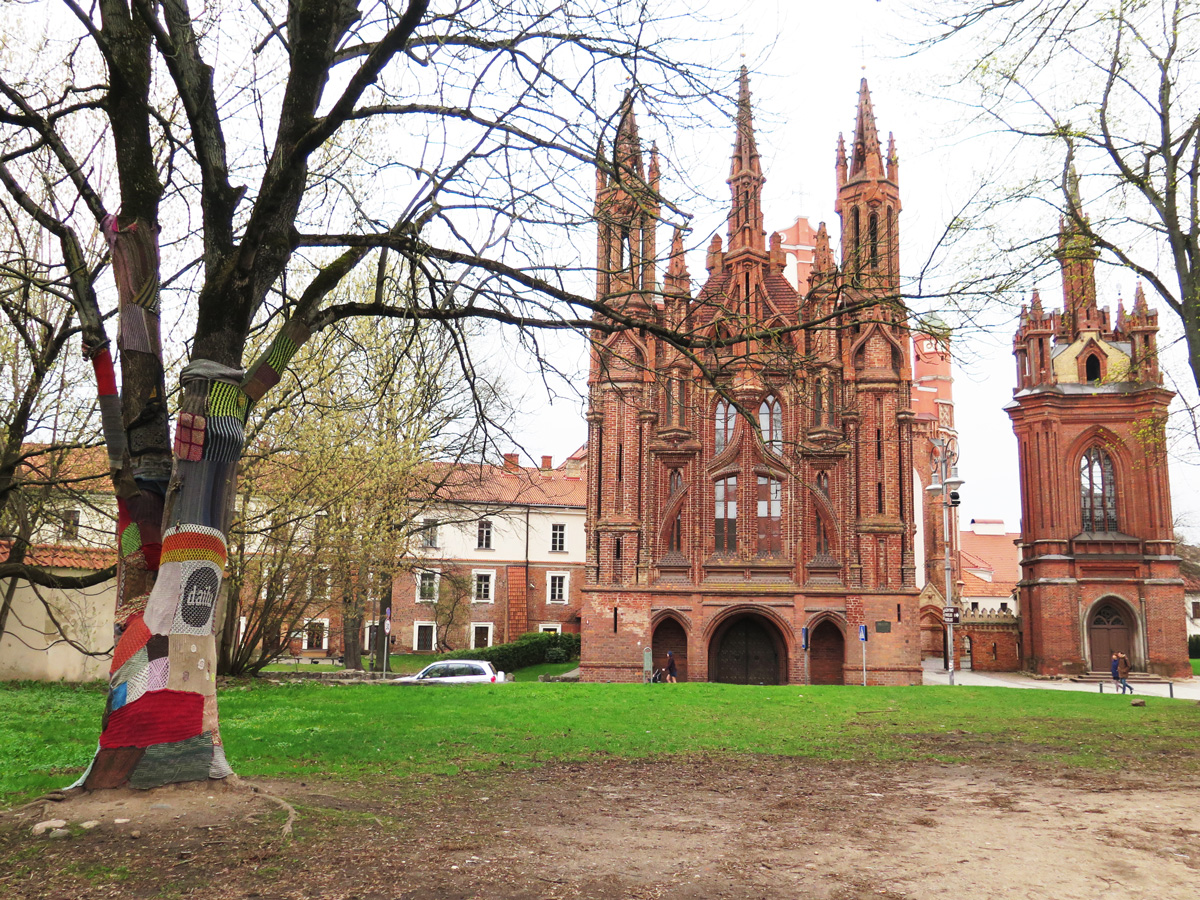
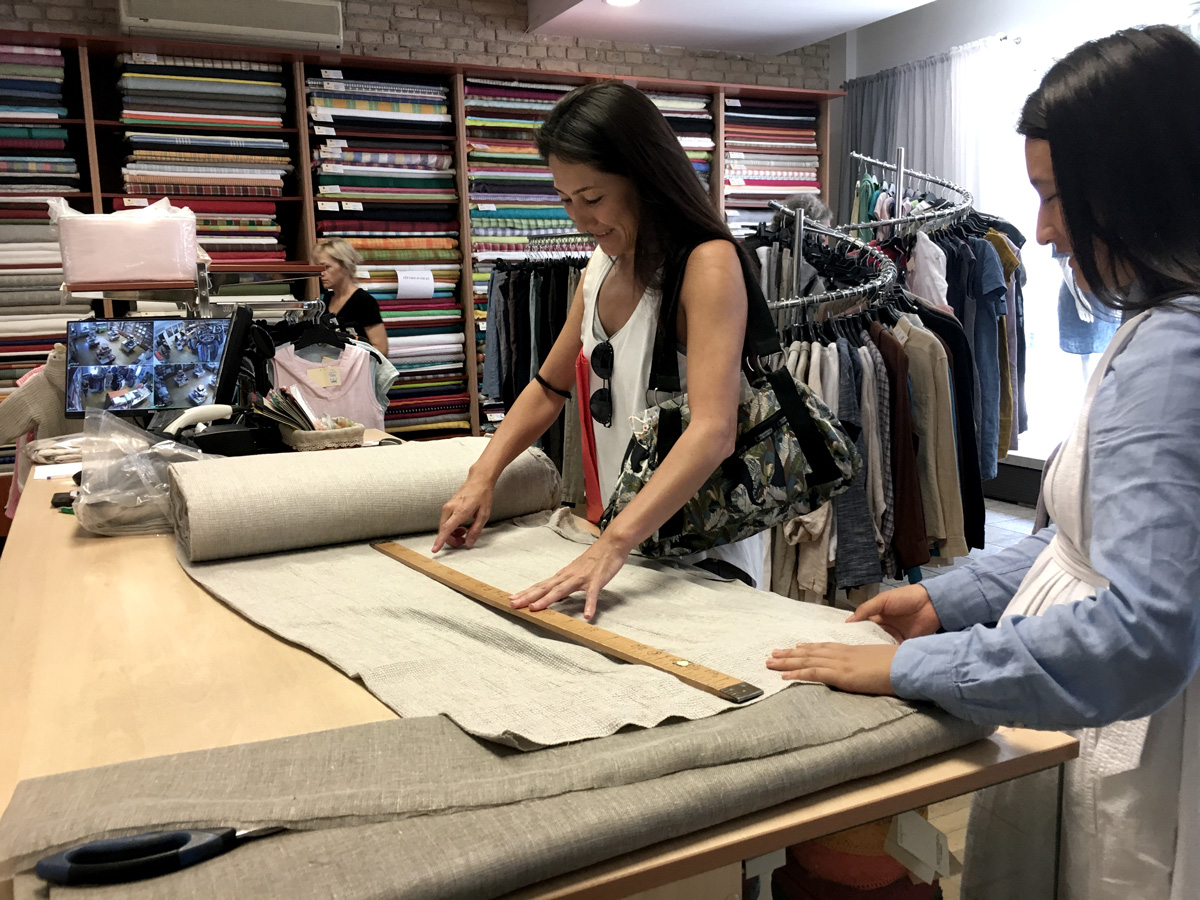
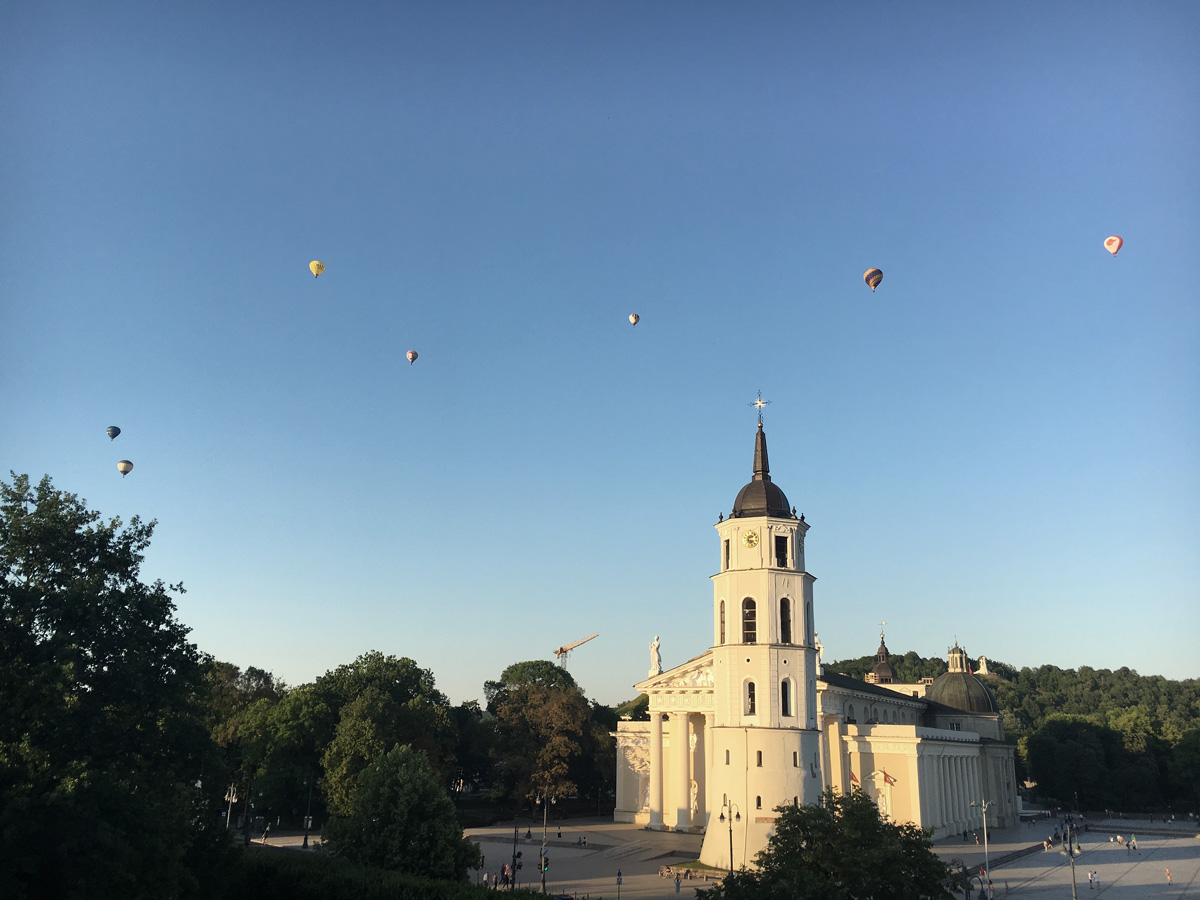
Our first visit to Lithuania was in 2016. In 1990, Lithuania declared its independence from the Soviet Union, and since then, they had been trying to return to Europe. And in May 2004, they gained the membership in the EU. After Estonia (2011) and Latvia (2014), Lithuania also reduced their own currency “LTL” to Euro in 2015. When we went to Lithuania in 2016, there were still some people who had doubts about the new currency.
The complex conversion had made even mild and gentle Lithuanian people confused and irritated. However, when we last visit there in 2018, a totally different scenery laid before us. There were a lot of foreign-affiliated restaurants and clothing stores along the main street, and what is more, the people passing by looked like more polished and fashionable than before. Lithuania is always famous for its beautiful men/women, but today you can see more people like runway models on the street.
Lithuania is a safe place, and you can stay out late at night especially during the night less
summer. However, the local law doesn’t allow the stores to sell alcohol after 9 p.m., so we recommend you get drinks and snacks before that. Having wines and cheeses brought from natural food stores on the terrace is a good way to enjoy the time. “Bio Sala” (Vokiečiųg. 13, Vilnius 01130 Lithuania) is one of our recommendations when it comes to the organic food. “Gyoza Bar” across the street is also a nice place to grab some Japanese gyoza.
For the latest three years, the prices are much lower than in Estonia and Latvia. But as we received a kind suggestion from our client saying: “Would you like us to accept your order by the end of 2018, as the prices would be much higher from next year?”, it seems the prices there are also increasing.
Lithuania and Linen
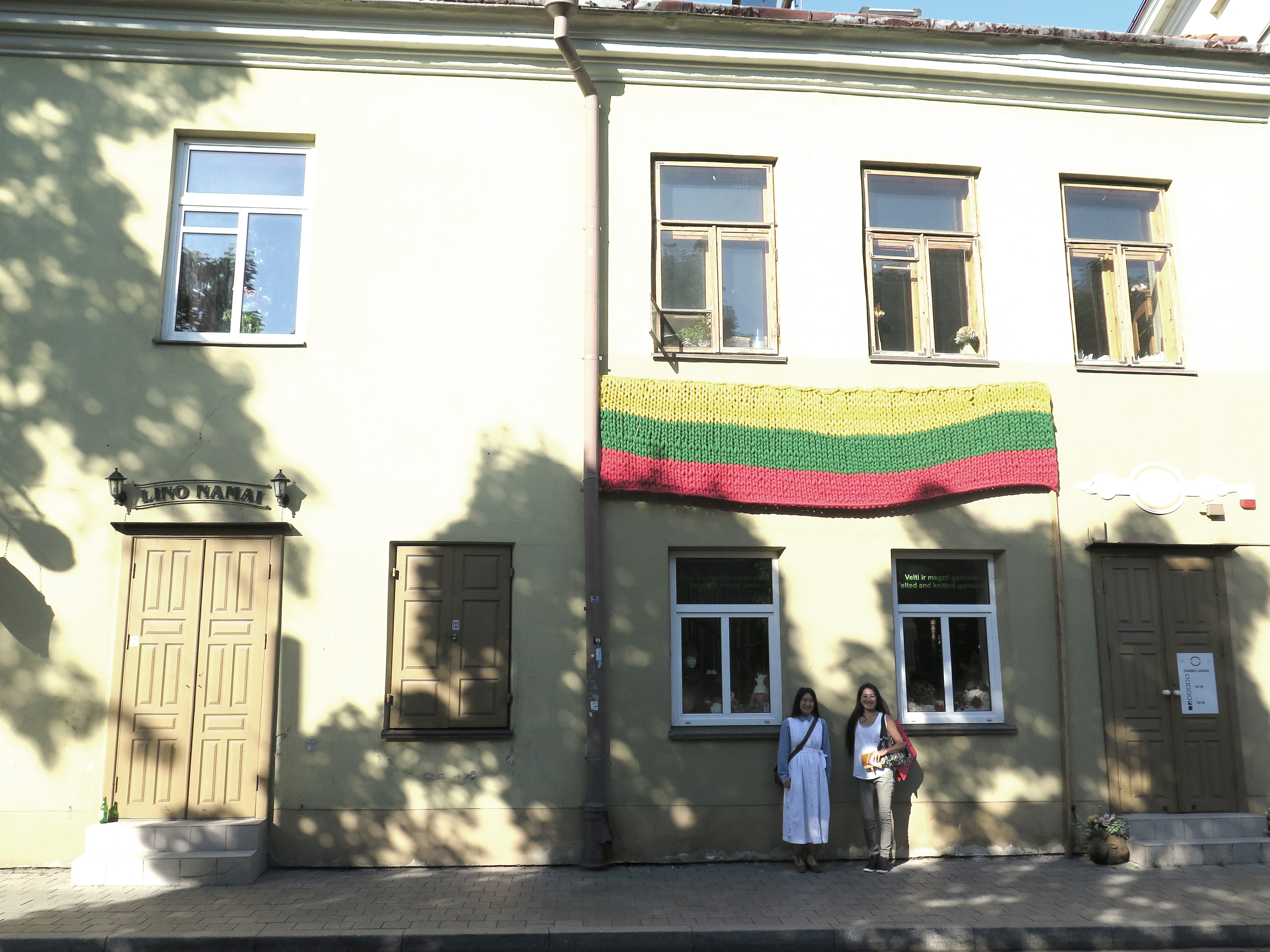
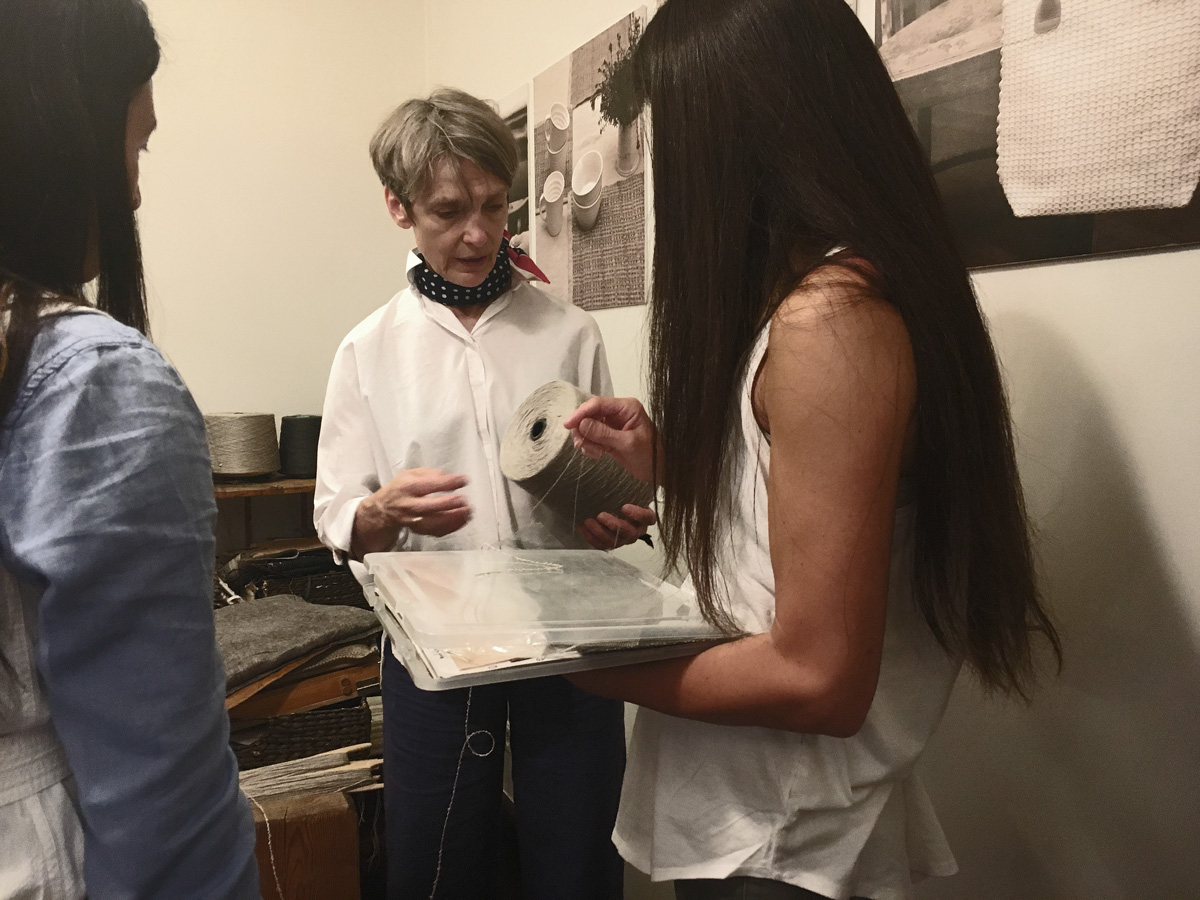
Linen is one of the most traditional industries in Lithuania. It is said that linen is one of the
oldest textiles, as the ancient Egyptian mummies were wrapped in linen clothes. From the 16th century, sailors began delivering flax plants to farmers. In Lithuania, where the temperature difference was drastic, they could cultivate linens with long and soft fibers.
This favorable condition drove the sailors to export the linen products to other countries, and Linen became the main business of Lithuania; from the culture and spinning of flax to the export and sale of textiles. At that moment, the girl’s name came from linen such as “Lina” or “Liena” were very popular. Lina is still ranked 18th these days. However, the number of traditional linen growers have decreased dramatically in the past several years, because the global price competition in the linen industry is intensifying with the rise of Asian countries. We couldn’t visit the farmers there, but we still remember that one of the linen weavers said to us passionately that they would make this culture great again.
Lithuanian linen is renowned worldwide for its high quality as French and Belgian. The damask tablecloth is still used for official dinners in Europe, so we believe that the linen industry will continue forever with the great culture.
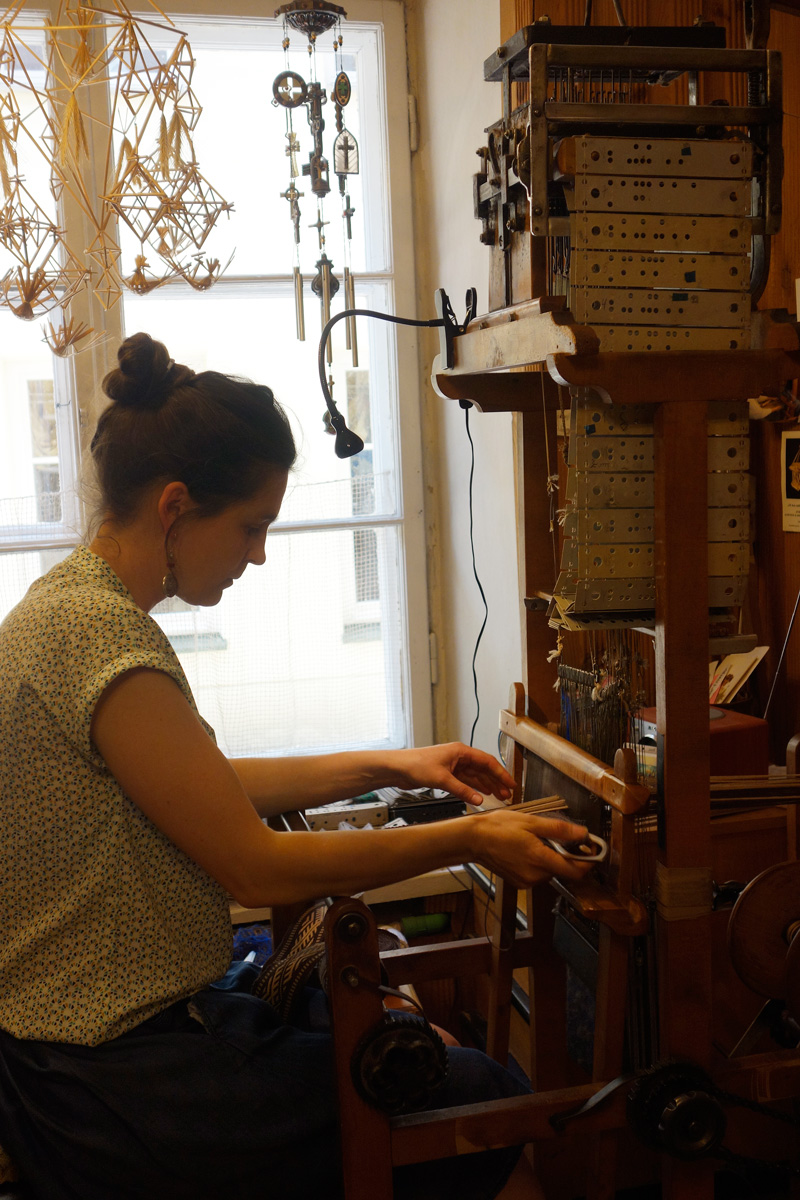
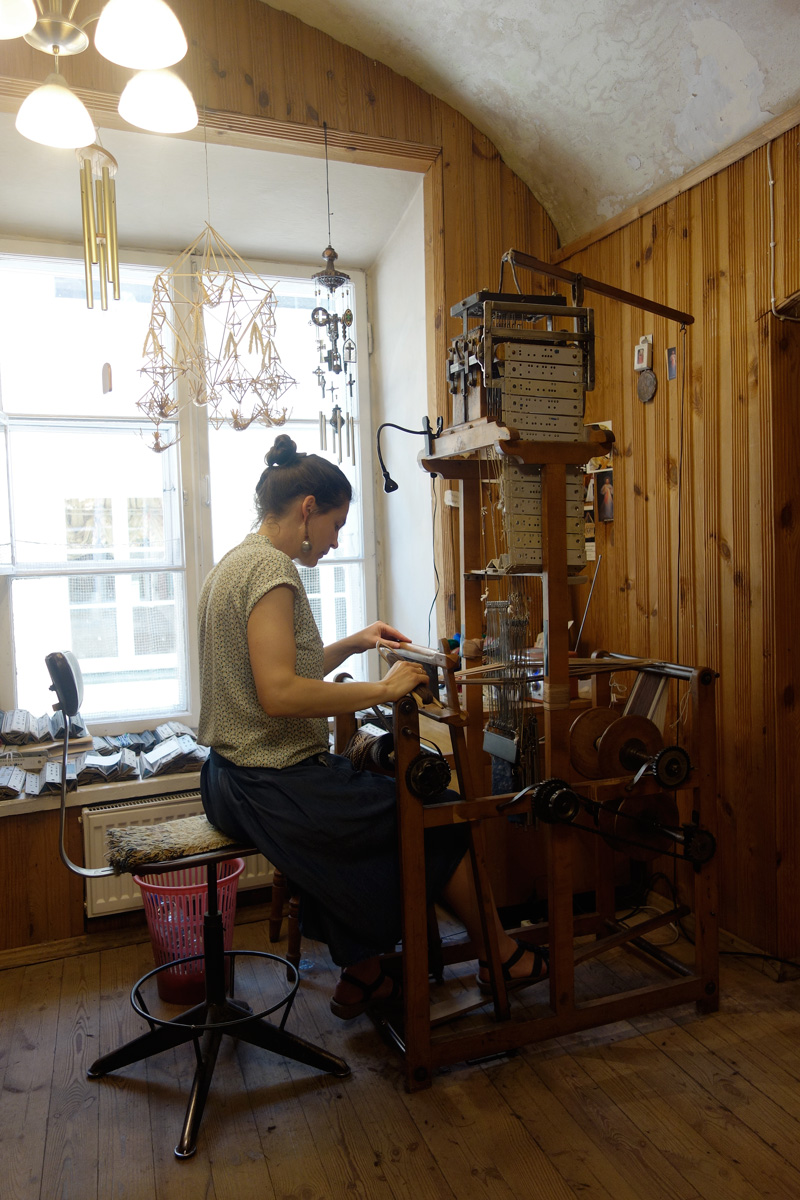
Wash and grow. The good quality will last one hundred years with great care. Linen as a
marital package
The linen industry is one of the inextricable parts of the European history. Table linens, kitchen linens, bed linens and bath linens are essentials for their marriage, and usually, their family crest or initials are weaved in them. That is how the family linens are passed on through generations.
Linen is breathable. The flax fiber, from which linen is made, is hollow and absorbs
moisture well. Linen is four times more absorbable than cotton and dries out twice as quickly as cotton. It has the natural ability to prevent bacterial growth. Additionally, linen is known to gain strength when wet, so it can be used even in humid places such as Asian countries. Linen fibers are hollow and moving air easily, so they help dissipate the heat outside the body. It is not too much to say that linen is a “wearable medicine." It is valued for its ability to keep cool in the summer months and trap warmth when you get a cold. The more we use the linen, the more the linen be strengthened. It is said that linen become the most elastic from the first 10 years of use.

Project Made with Japan, which connect linen to Oshima tsumugi, has started based on the concept of “Enjoying quality products for a long time.” Oshima tsumugi industry is a cultural tradition of Amami Oshima with a great history. It is said that three generations can wear the same Oshima Tsumugi garment. However, after World War II, their culture has become more westernized, and it is getting more difficult to preserve the tradition and weaving skills of Oshima tsumugi. Therefore, we decided to focus especially on “dorozome” (mud dyeing) amongst a lot of weaving cultures in Amami Oshima and to try to murge Lithuanian linen and Oshima tsumugi.
In the island of wild nature, Amami Oshima
Amami Oshima in Kagoshima Prefecture can be reached in only two-and-a-half hours from Tokyo by airplane. Amami Oshima is the fifth-largest island in the Japanese archipelago after Sado Island. The island surrounded by the beautiful sea has a large mangrove forest, and that is home to about ten rare endemic animals including Amami rabbit, which is declared a natural monument of Japan, and Amami jays.
This project is led by Ms. Koto NATSUYAGI, who is a textile-dyeing artist and also a designer. We traveled together to Lithuania to see the factories and select the good textiles. Ms. NATSUYAGI re-discovered the beauty of the Japanese kimono while she was engaged in the world of haute couture in the United States and in Paris for 20 years. In 2006, she moved to Amami Oshima in order to learn a skill of mud dyeing. And now, she is running her own brand “MUD WESTERN” in Amami Oshima. In February, before we went to Baltic states, we stayed in Amami Oshima for a week to see if the former Latvian textiles would go well with a mud dyeing method. We had to see whether the products would be
exactly what we wanted and be safe as daily needs products for all families. The results ended up in a massive success. After the mud dyeing, at the beautiful beach, we talked a lot about the future travel to Lithuania until sunset.

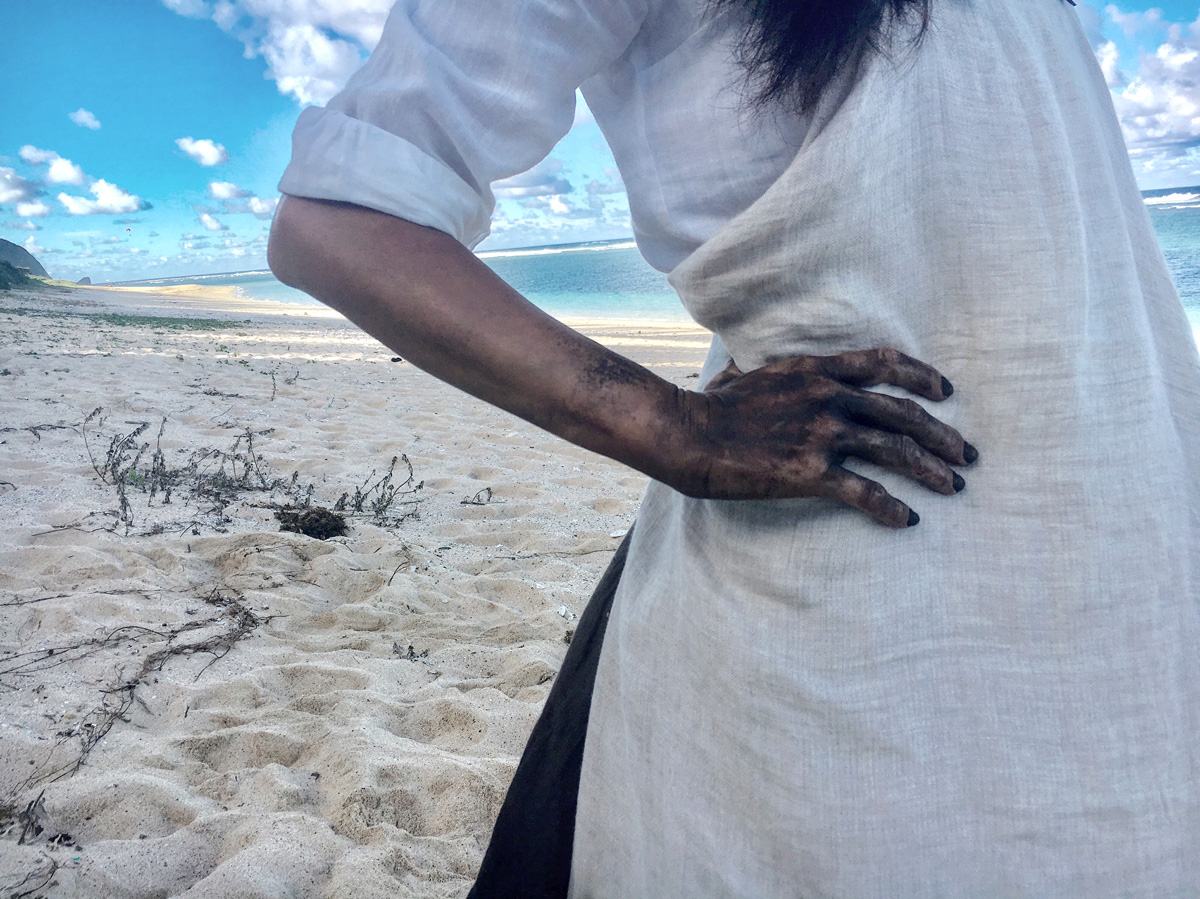
Amami Oshima and Mud Dyeing
Since about 1.5 million years ago, the mud fields in Ryukyu Islands including Amami Oshima have contained a lot of iron. Especially the mud of Amami Oshima was impalpable and soft, so it was suitable to mud dyeing. Some records found in The Shosoin Repository (Nara Prefecture) mentioned that the tsumugi weaving culture had already existed before 1720, but it became recognized as a luxury item in the 1800s, when the people started treating them as important merchandise and tributes to the Shognate with brown sugar lumps. The interesting point is that Oshima tsumugi has countless designs which are very complex and delicate. Depending on the area, it is decided if you weave only for men, or only for women. Fortunately, during our stay in Amami Oshima, we had opportunities to hear the story about the creators, sellers and those who try to make some record books about tsumugi.

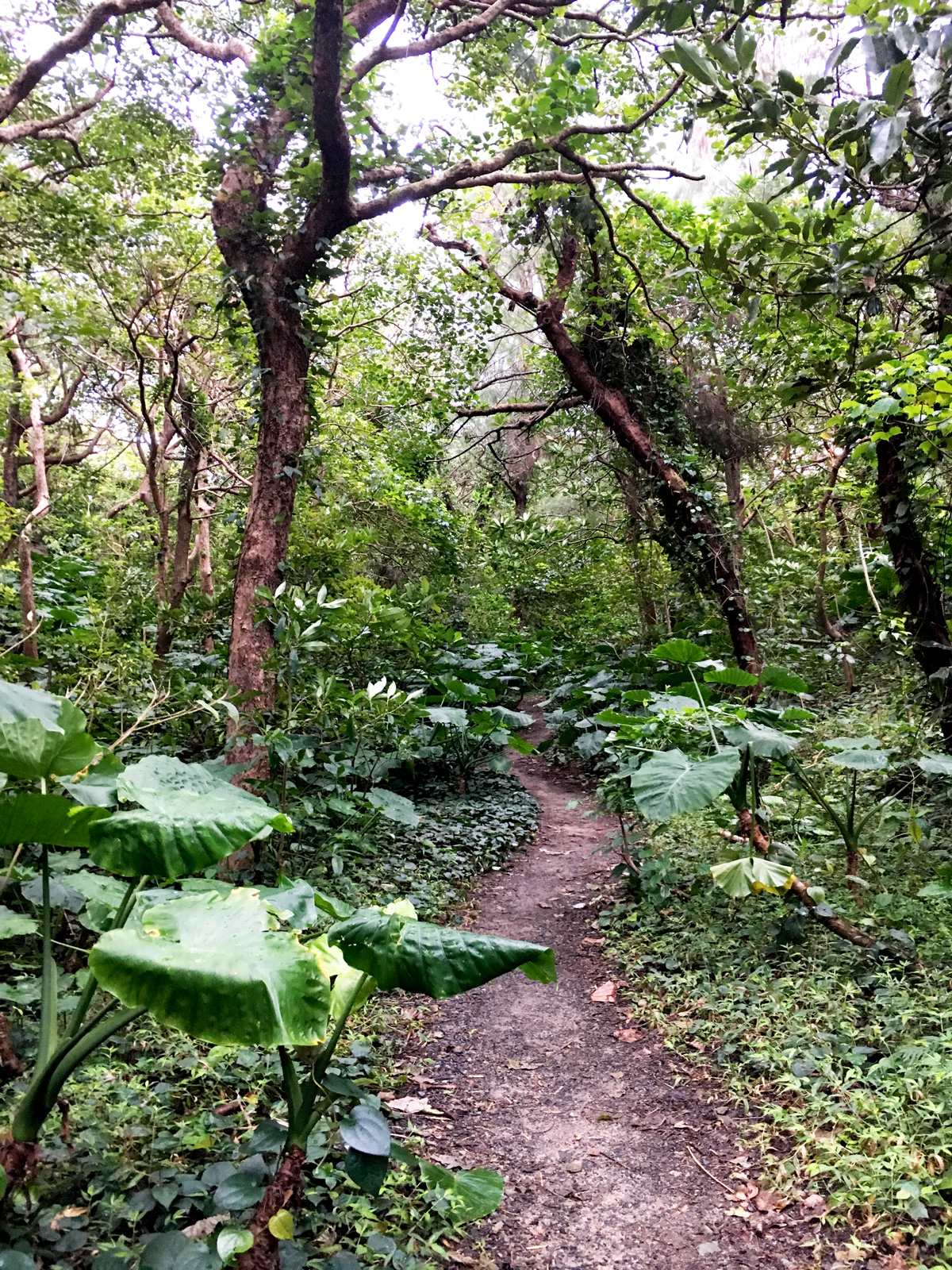
The process of the mud dyeing is as follows.
The yeddo hawthorn trees (called “techigi” in Amami Oshima), which plant grows in the coastal regions including the south of the Tohoku region in Japan, Korea and Taiwan, is first cut down from the wood and cut into pieces. Those pieces are boiled for several days, and the boiled water will be fermented in order to make the dyes from it. The more the techigi is exposed to the wind, the more the techigi becomes strong and high quality. The root contains more tannin, but as this part is very tough just like iron, it takes a long time just to prepare. What is more, it is necessary that the natural environment is taken into consideration.
The vegetable tannin extracted from the yeddo hawthorn trees is mixed together with ferric oxide in the mud repeatedly. Tannin and iron bind chemically and the color of the dye turns deeper and deeper. When it comes to Oshima tsumugi, they repeat those procedures more than 85 times -sometimes more than 100 times- so that the clothes will not lose their black color for three generations.
This procedure is just like Momotaro story; the old man goes to the hills to cut grass and
the old woman takes some clothes to the river to wash. But this time, one person plays those two roles! In addition, they have to rub the heavy textiles into the mud 85 times alone, while being stuck in the field. This is literally some kind of ascetic practices.
It is easy to understand why the tsumugi textures are so expensive -the price range is still between
hundreds of thousands of yen to millions yen- considering that the mud dyeing is just one part of 30 or 40 procedures. It was surprising to us that each process required physical strength, experience and patience which were beyond our wildest imagination.
Oshima tsumugi is the one and only culture in this island, and its history and crafts cannot be fulfilled perfectly in any other place. They have never depended on imported materials for so many years. It tells us that this work is bound tightly with nature and human.
If you have a chance to go to Amami Oshima and wish to know how to make Oshima tsumugi, we strongly recommend that you visit Amami Ooshima Tsumugi Sightseeing Garden in Ooshima Tsumugimura, so that a guide will take you around the garden and
explain the process of making Oshima tsumugi. You can also talk with the traditional creators of tsumugi. Please note that reservation is required.
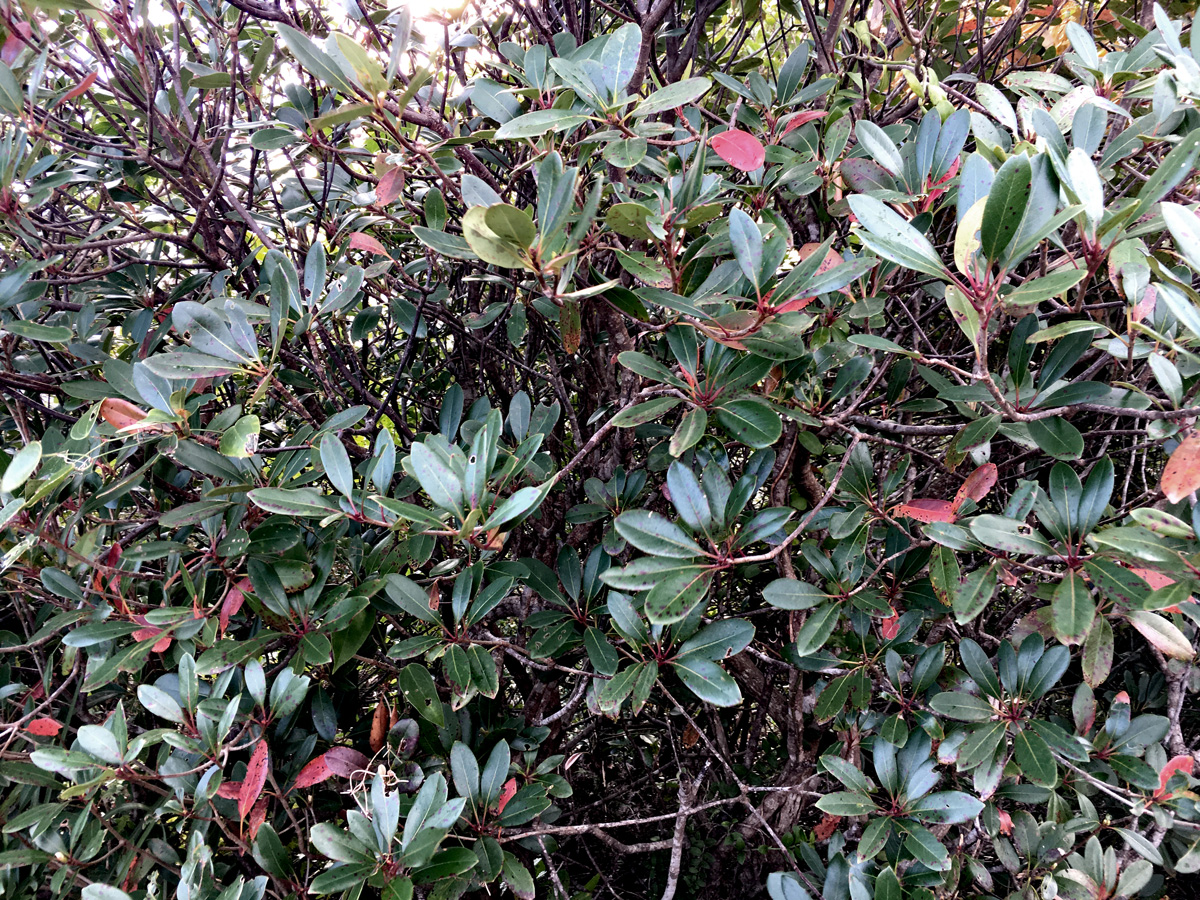
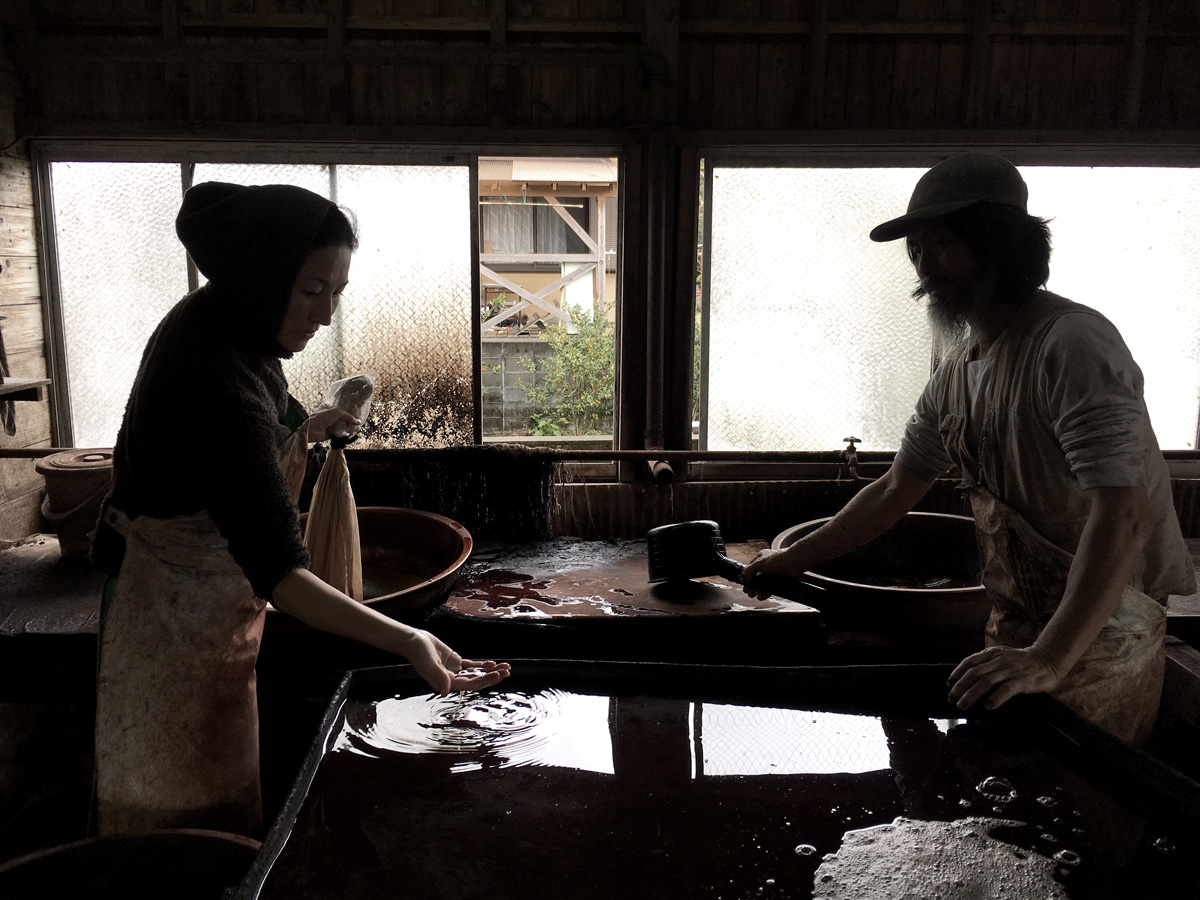
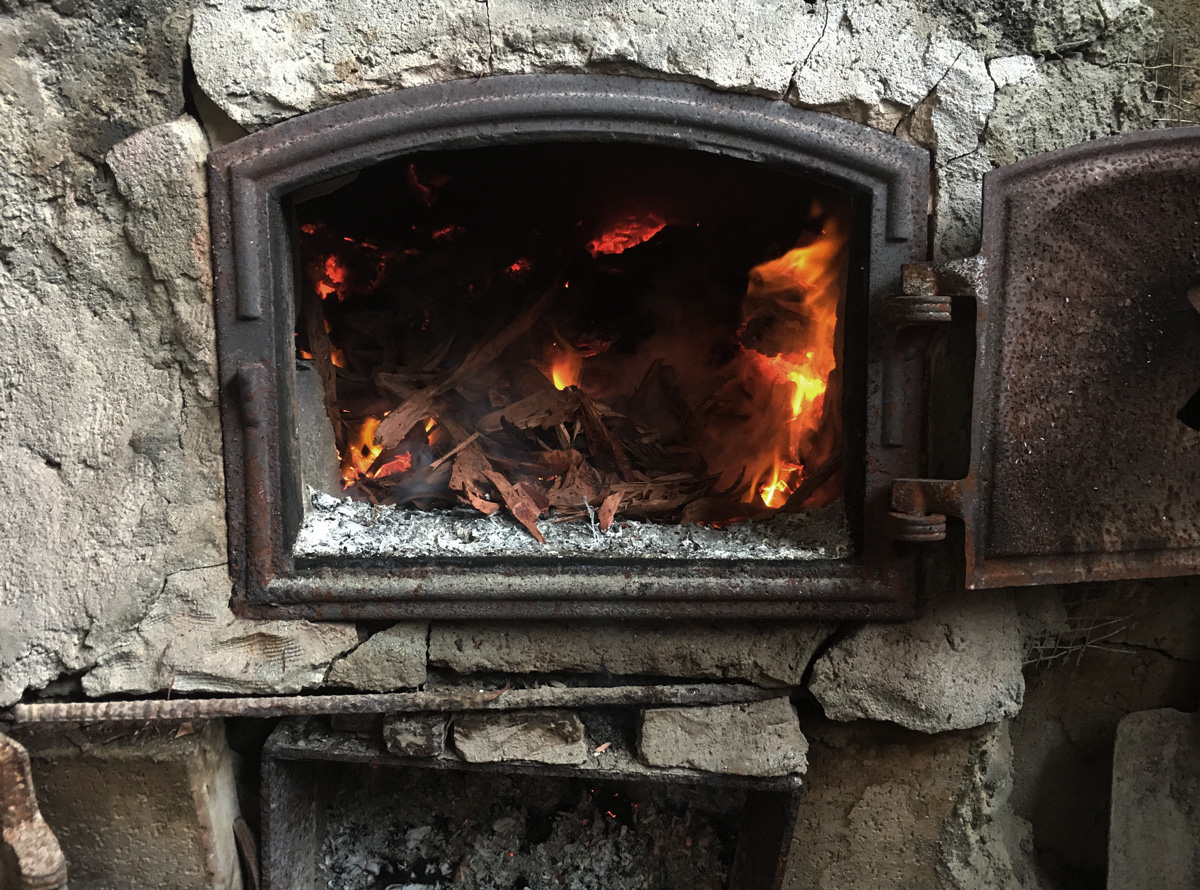
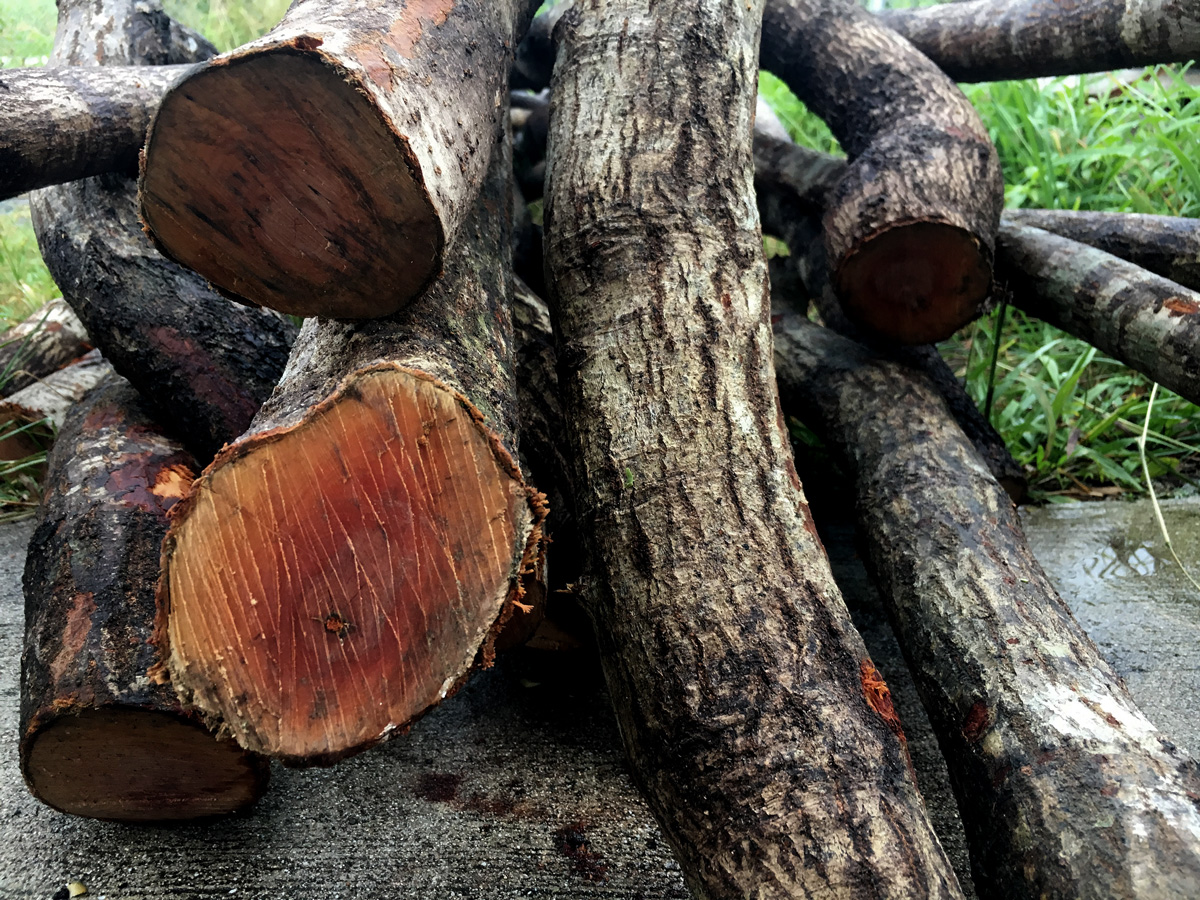
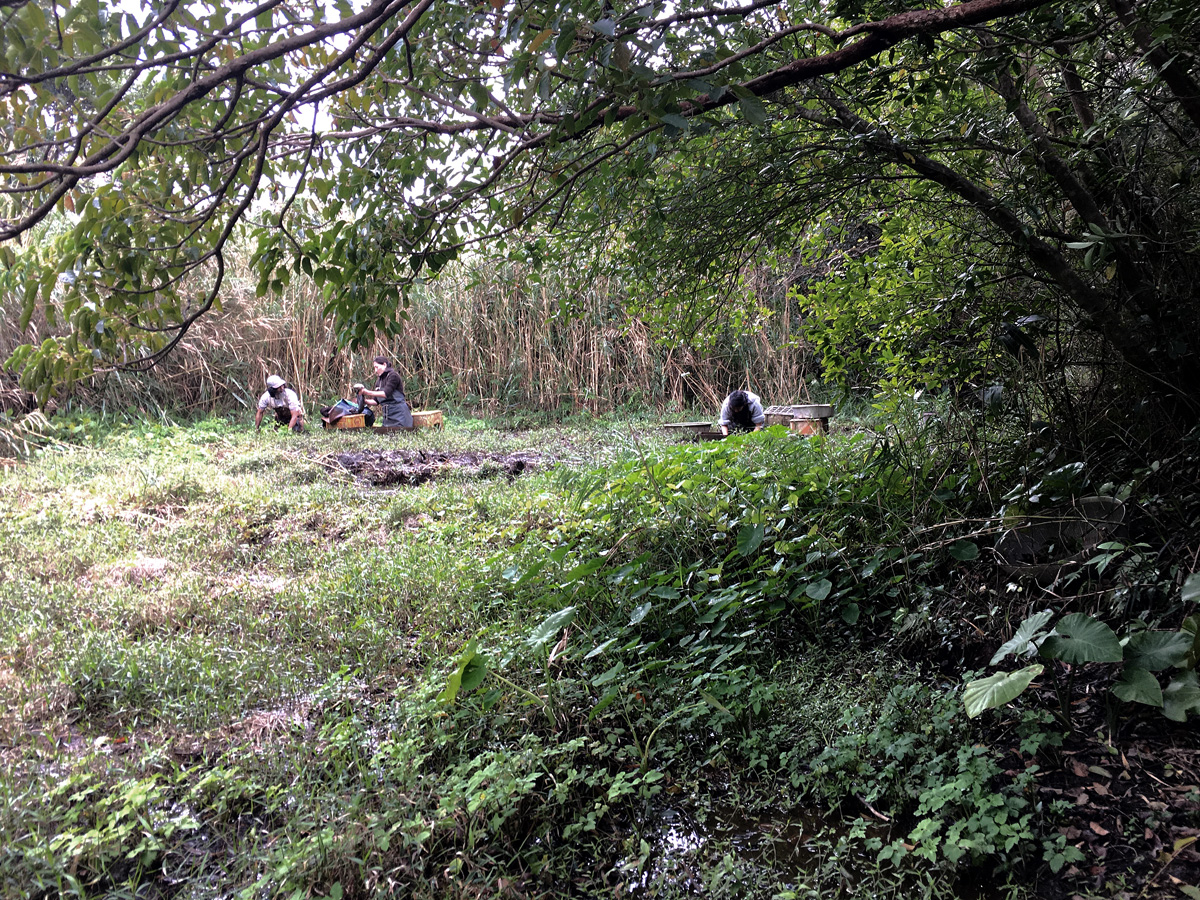
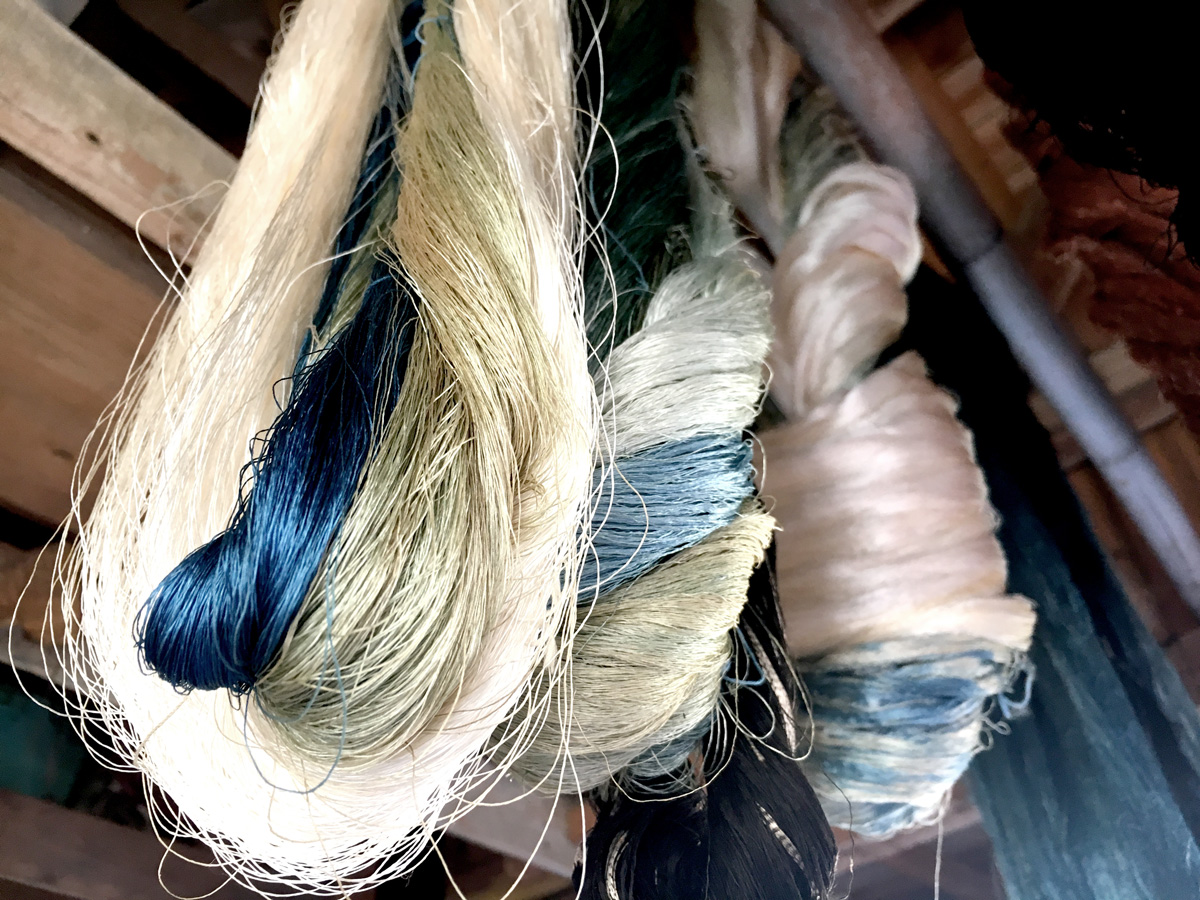
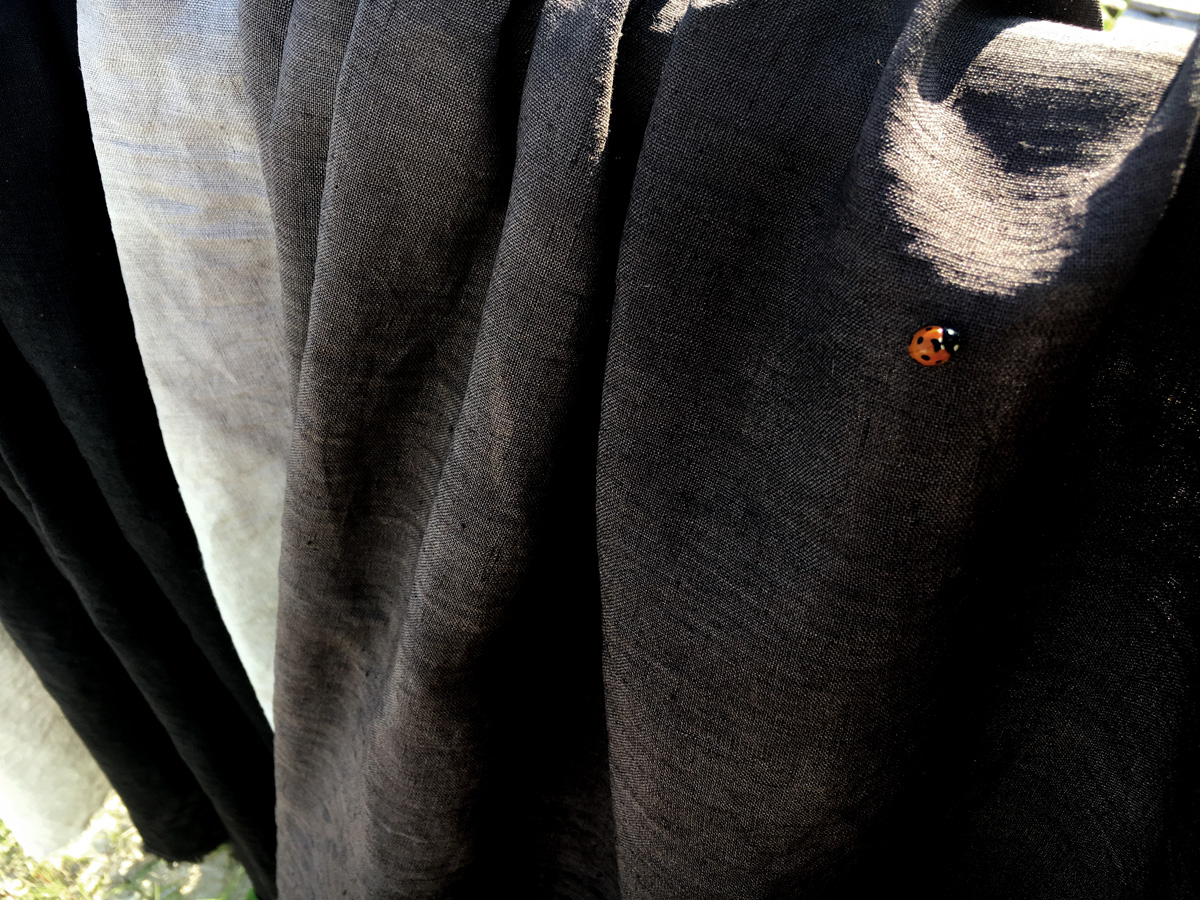
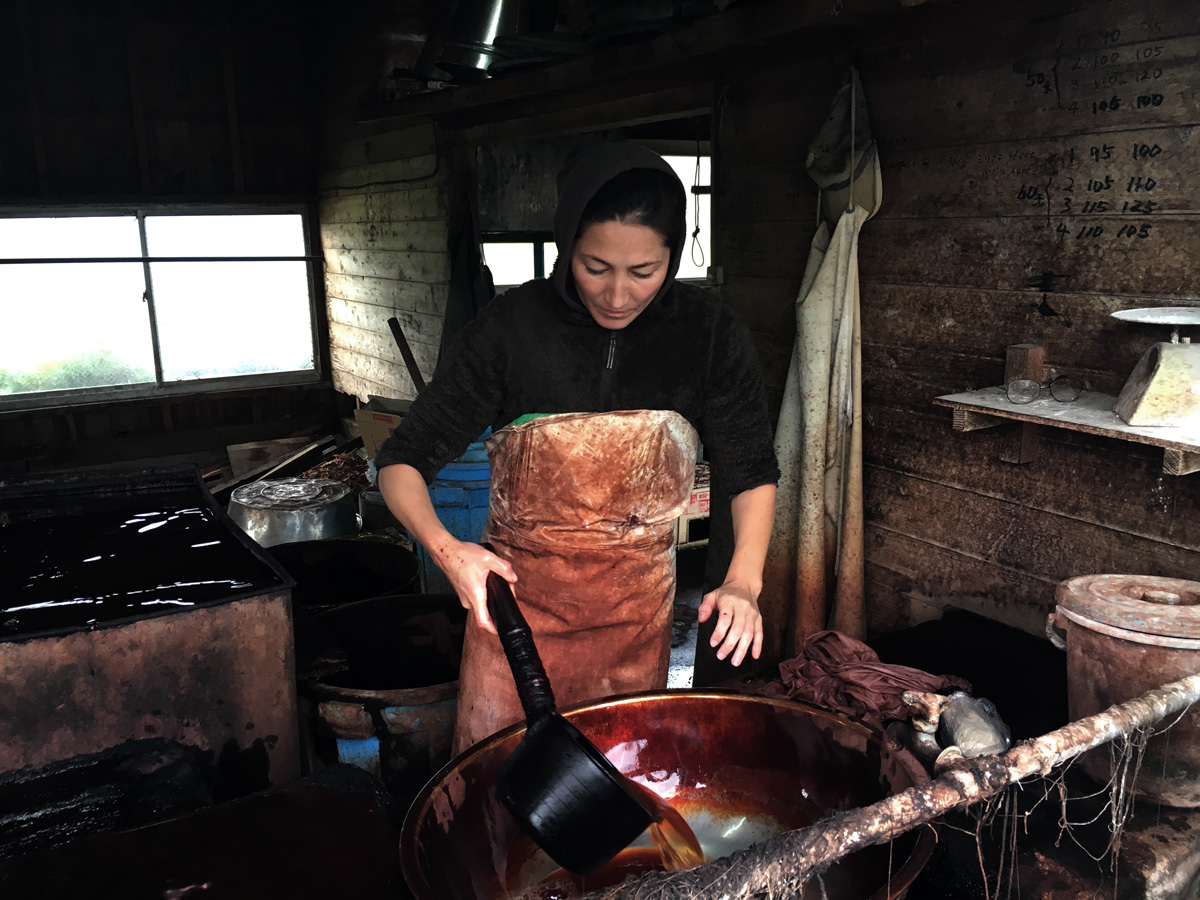
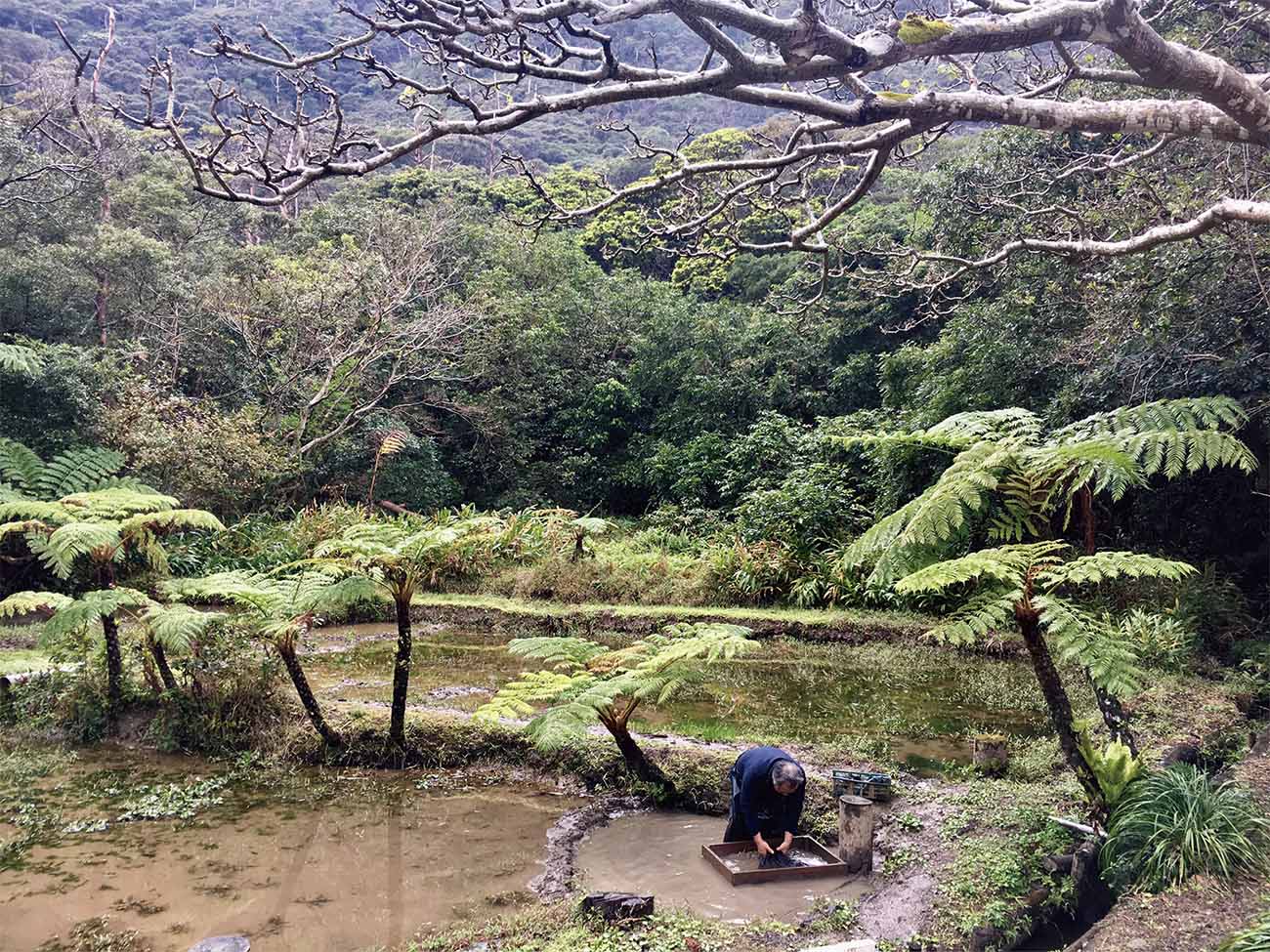
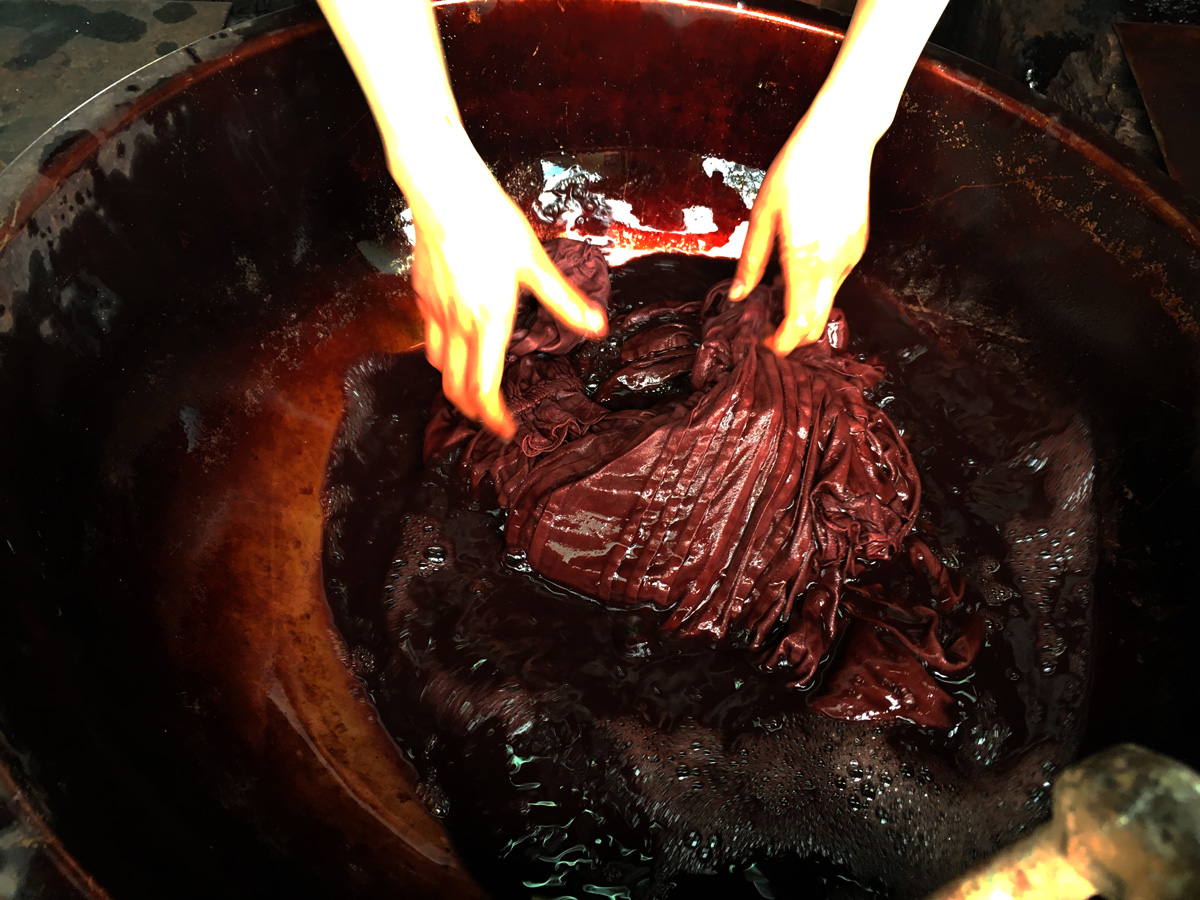
This time we introduced Lithuanian textiles dyed in beautiful gradient which were made originally by Ms. Koto NATSUYAGI. At the same time, we visited the place where Latvian textiles were being dyed. Each textile is repeatedly dyed with techigi, rubbed into the mud and washed in the river by herself. Each is the one and only product made by Ms. NATSUYAGI. Mud-dyed towels and shirts are always welcomed by those who have a sensitive skin. Today we produce the products such as towels, aprons and big tablecloths, which are made by smooth linen textiles and are easily washable. Linen as a “wearable medicine” meets the mud dyeing which method is gentle on our skins. The mud dying
provides excellent anti-bacterial, anti-inflammatory and deodorizing effects, and the more you use the items, the more their textiles become soft. Thanks to its large water absorption effect, we have received a lot of testimonials from the customers. Some people said that even the children who had severe eczema could use our mud dyed towels. From baby wears to towels and shawls, the mud dyed textiles can be utilized as part of your everyday life.
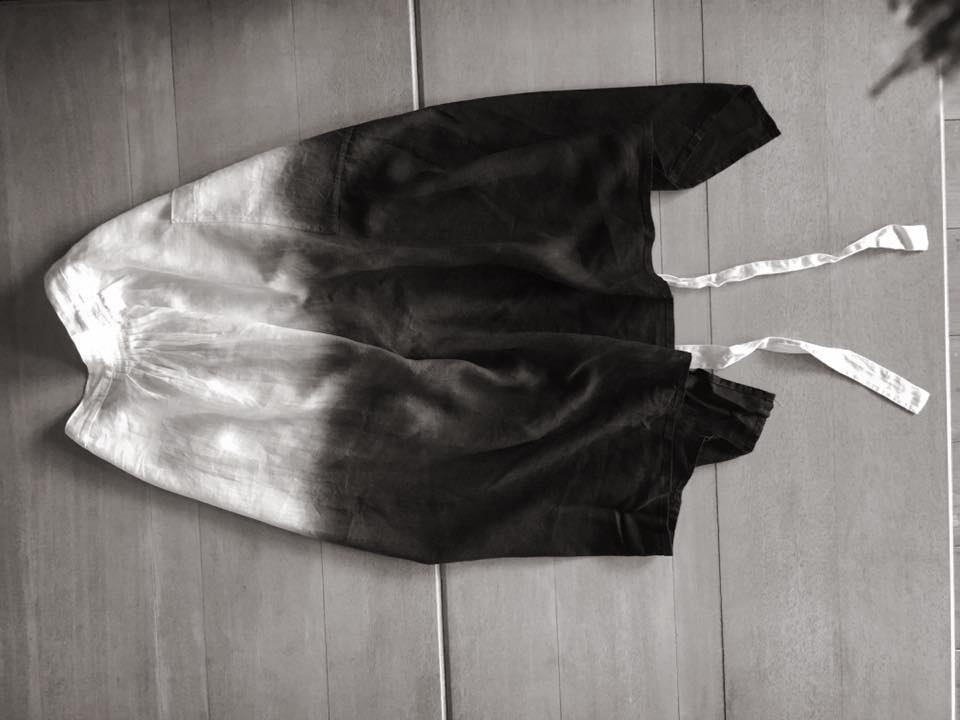
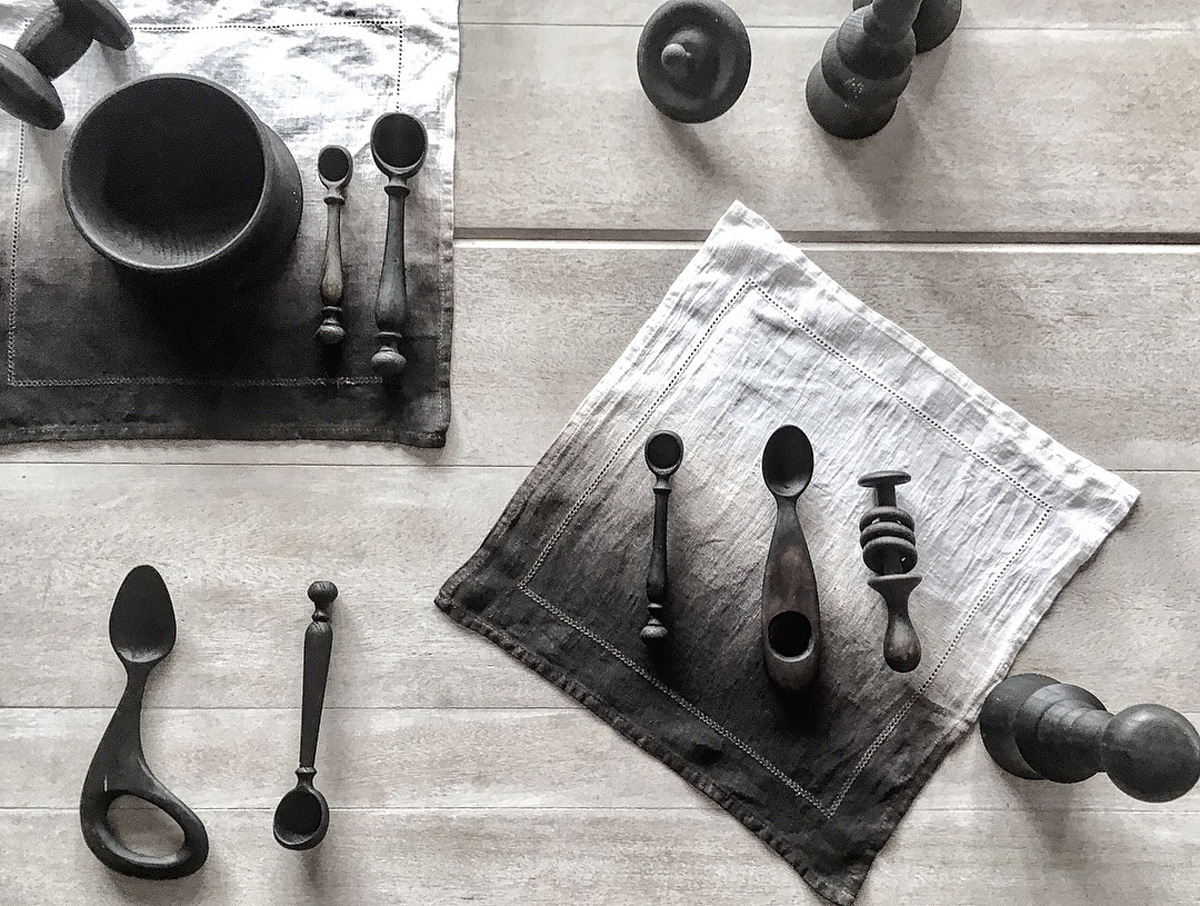
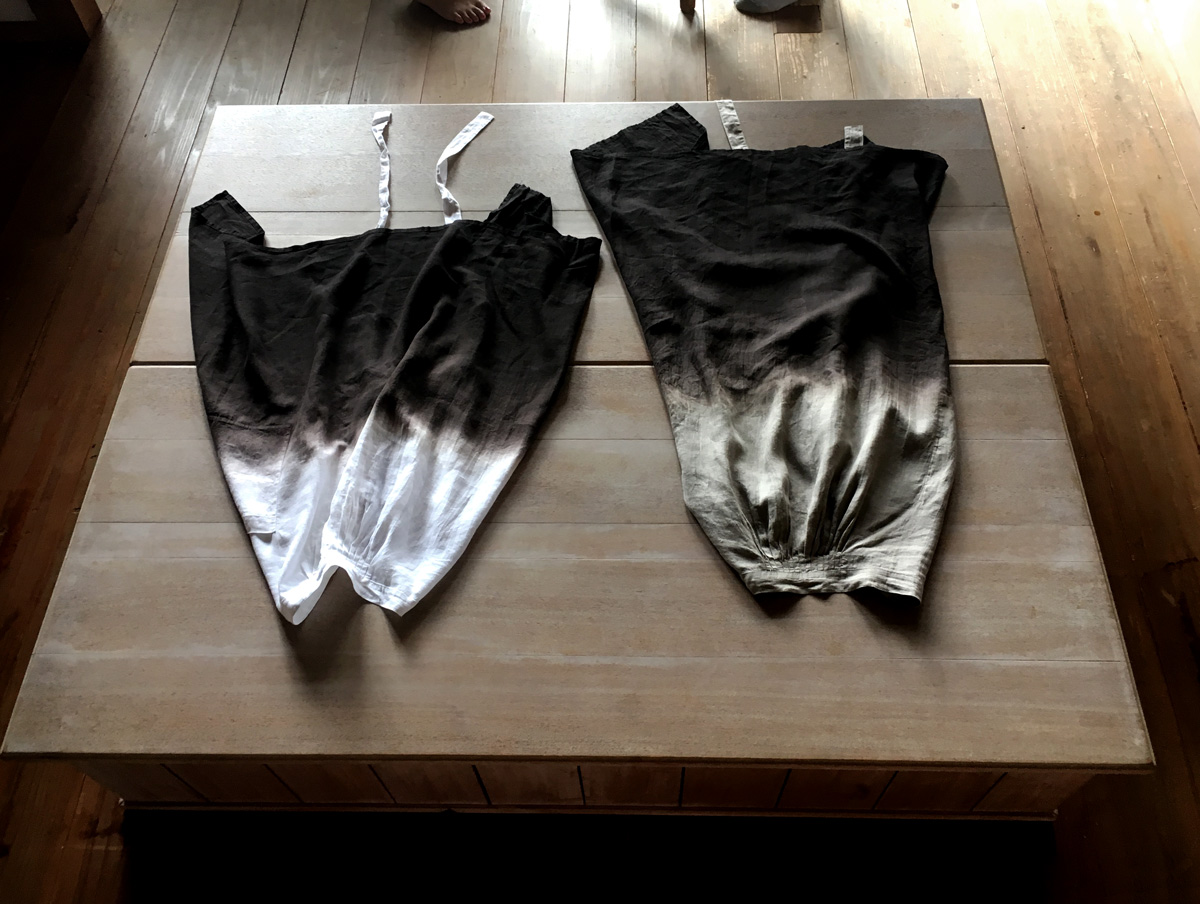

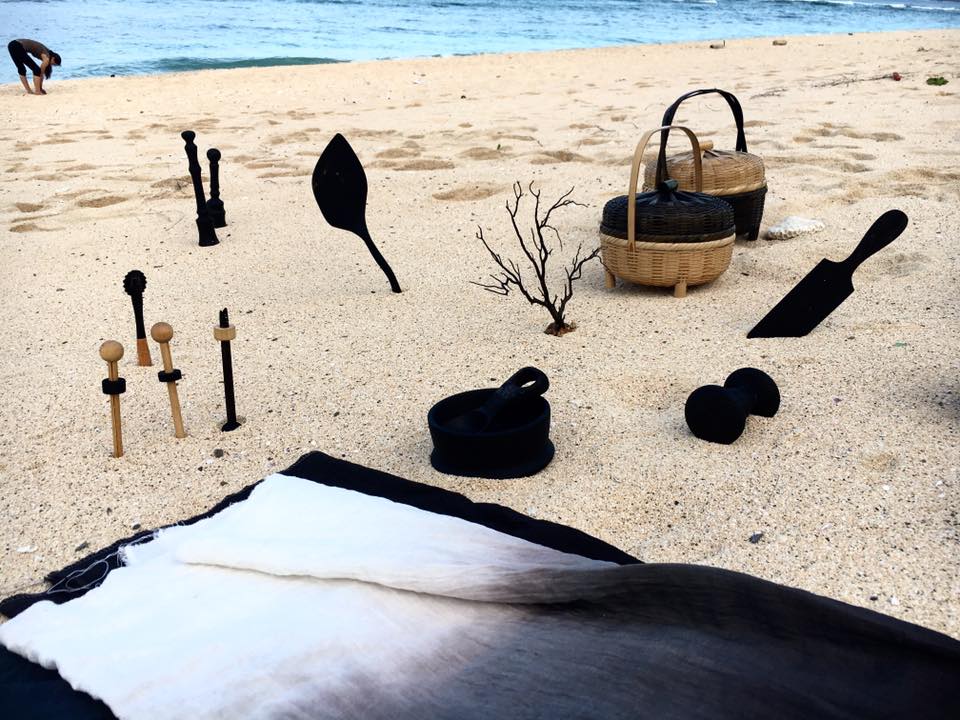

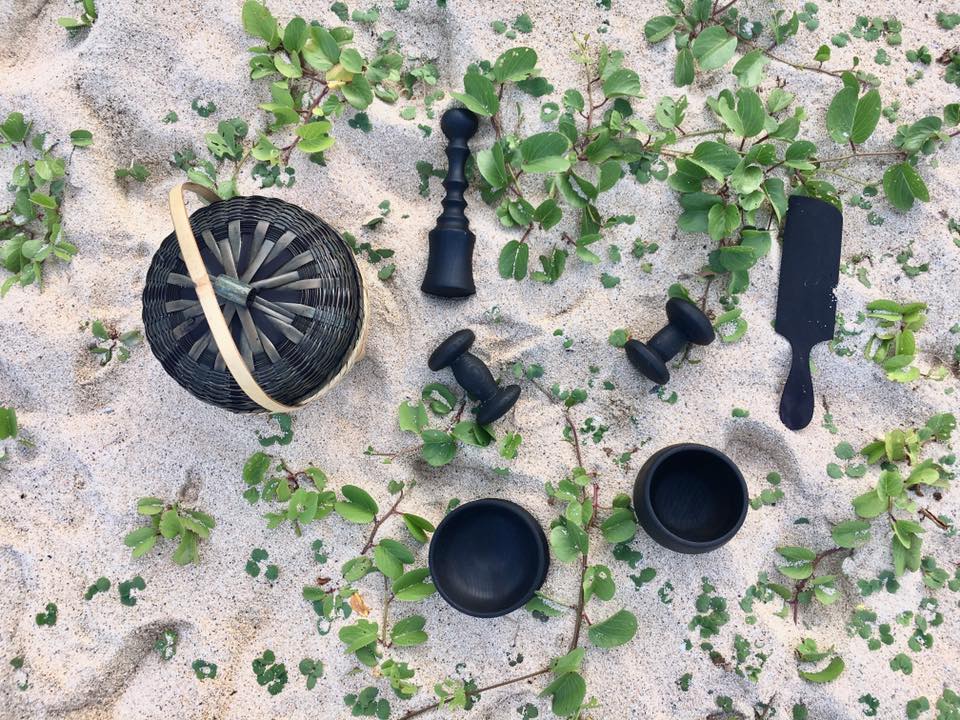
Media Information
Magazine
“Discover Japan: Lifestyles of Craftspeople” (published on November, 2018) featured our project throughout 6 pages.
TV
BS TV Tokyo
Fashion tsushin:29,December 2018 23:00~
FOLKHOOD〜Made with Japan2018
*The exhibition Lithuania+Amami Oshima 2018 has already ended.
Latest Information
FOLKHOOD_FACEBOOK